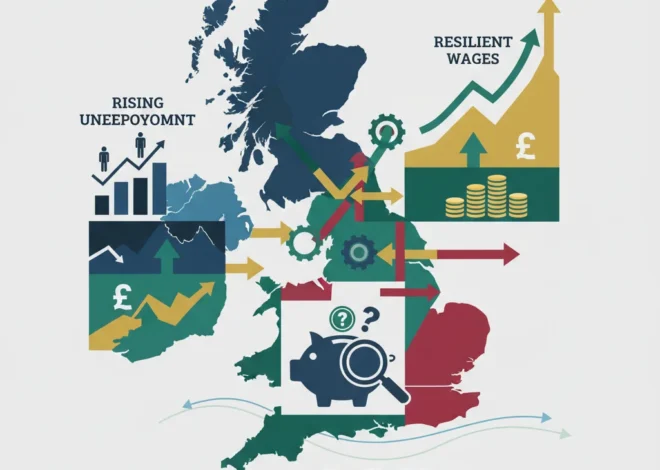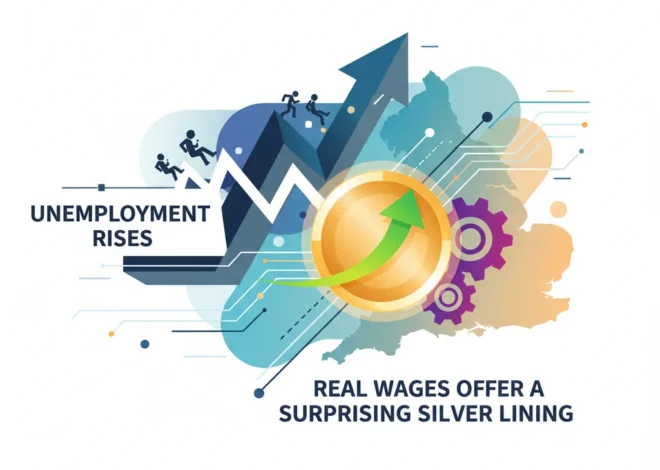
Your Financial Thermostat: When Is the Right Time to Make a Major Investment Move?
When do you turn on your heating for the winter? It seems like a trivial question, but the answer reveals a great deal about your personal philosophy on preparation, cost, and comfort. Some people are calendar-driven, flipping the switch on October 1st, come rain or shine. Others are data-driven, waiting for the mercury to consistently dip below a specific temperature. A recent discussion on this very topic highlighted these distinct behavioral camps, revealing a fascinating microcosm of human decision-making.
This simple domestic debate is a powerful metaphor for a far more complex and consequential question in the world of finance and investing: What is your trigger? In an environment of constant market noise, fluctuating economic data, and endless expert opinions, knowing when to act—when to buy, sell, or hold—is the defining challenge for every investor, from the retail trader to the institutional fund manager. Your “financial thermostat” is the set of rules, signals, and psychological triggers that governs your participation in the markets. Understanding it, calibrating it, and adhering to it is paramount to navigating the volatile global economy and achieving long-term financial success.
Just as there’s no single “correct” day to turn on the heat, there is no one-size-fits-all trigger for investment decisions. The optimal strategy is deeply personal, tied to your risk tolerance, time horizon, and financial goals. Let’s explore the different types of financial thermostats and what they reveal about various investment philosophies.
The Calendar-Driven Investor: The Power of Systematic Strategy
The calendar-driven individual, who starts their heating on a predetermined date, embodies the systematic investor. This archetype operates not on feeling or short-term forecasts, but on a disciplined, pre-established plan. In the world of investing, this is the person who practices dollar-cost averaging, contributing a fixed amount to their portfolio every month, regardless of whether the stock market is soaring or plummeting.
Their trigger is time itself. The strategy is built on the foundational principle of economics that, over the long run, markets tend to rise. By investing consistently, they smooth out volatility, buying more shares when prices are low and fewer when they are high. This approach removes the greatest enemy of the average investor: emotion. There is no panic selling during a downturn and no FOMO (Fear Of Missing Out) buying at the peak of a bubble. The plan is the plan.
This disciplined approach extends to portfolio rebalancing. A systematic investor might review their asset allocation every quarter or year, selling overperforming assets and buying underperforming ones to return to their target mix (e.g., 60% stocks, 40% bonds). This forces a “buy low, sell high” discipline, a concept that is simple in theory but notoriously difficult in practice. This strategy is less about timing the market and more about time *in* the market. A Green Giant Stumbles: Why Vestas' Polish Pause Signals a Storm for European Wind Energy
The Temperature-Driven Investor: The Art of Tactical Response
In contrast, the person who waits for the temperature to drop below a certain threshold—say, 15°C—is a tactical, data-driven decision-maker. Their financial counterpart is the investor who acts based on specific market signals and technical indicators. Their trigger isn’t the calendar; it’s a quantifiable change in the market environment.
These signals can vary widely:
- A stock crossing its 200-day moving average.
- The Volatility Index (VIX) spiking above a certain level, indicating fear and a potential buying opportunity.
- A company reporting earnings that dramatically beat or miss expectations.
- A change in monetary policy from a central banking institution like the Federal Reserve.
This approach has been supercharged by the rise of fintech and accessible financial technology. Retail investors now have access to sophisticated charting tools, real-time data feeds, and algorithmic trading platforms that were once the exclusive domain of Wall Street firms. They can set alerts, execute complex orders, and react to market news in milliseconds.
However, this tactical approach is a double-edged sword. While it offers the potential for higher returns by capitalizing on short-term opportunities, it also exposes the investor to greater risk and psychological pressure. The constant need to monitor data can be exhausting, and the temptation to over-trade can lead to poor decisions and mounting transaction costs. The temperature-driven investor must possess immense discipline to distinguish a genuine signal from market noise.
Comparing Investor Thermostats: Strategy vs. Tactics
To better understand these contrasting approaches, let’s compare their core characteristics. This table illustrates the fundamental differences in mindset, methodology, and the technological tools they leverage.
| Attribute | The Systematic Investor (Calendar-Driven) | The Tactical Investor (Temperature-Driven) |
|---|---|---|
| Primary Trigger | Passage of time (e.g., monthly, quarterly) | Specific market data or events (e.g., price levels, news) |
| Core Philosophy | Time in the market beats timing the market. | Market inefficiencies create profitable opportunities. |
| Key Strategy | Dollar-Cost Averaging, Periodic Rebalancing | Technical Analysis, Event-Driven Trading |
| Psychological Challenge | Patience and faith during long downturns. | Controlling fear, greed, and the urge to over-trade. |
| Role of Technology | Automated investments, robo-advisors. | Real-time data, advanced charting, algorithmic trading. |
The Macro-Condition Investor: Reading the Economic Climate
There’s a third type of investor, one whose thermostat is connected to the wider world. They don’t just look at the calendar or the market ticker; they analyze the entire economic climate. Their decision to “turn on the heat” is based on macroeconomic indicators like inflation rates, GDP growth, employment figures, and geopolitical events. Just as one might check the long-range weather forecast, this investor scrutinizes the health of the national and global economy.
A decision to shift from equities to bonds might be triggered by a series of interest rate hikes from a central bank, designed to cool an overheating economy. Conversely, signs of a looming recession might prompt them to invest in defensive sectors like consumer staples and healthcare. This top-down approach requires a deep understanding of economics and the intricate ways that policy, politics, and global trade impact financial markets.
In recent years, some macro investors have turned to alternative systems like blockchain and cryptocurrencies, viewing them as a potential hedge against traditional fiat currency devaluation and central banking policies. Their investment thesis isn’t just about a single company’s performance, but about the structural integrity of the entire financial system. As one source notes, external factors often dictate our choices more than we realize. The Investor's Palette: Deconstructing the Formula for Financial Success
The Value-Driven Investor: Waiting for the Deep Freeze
Finally, we have the equivalent of the person who puts on three sweaters and a blanket, refusing to touch the thermostat until icicles form on the windows. This is the value investor, the ultimate cost-conscious participant. Their trigger is not time or technical data, but price relative to intrinsic value. They are the bargain hunters of the financial world, patiently waiting for a “deep freeze” in market sentiment to create irresistible opportunities.
A value investor, in the mold of Benjamin Graham or Warren Buffett, will spend months or even years analyzing a company’s fundamentals—its balance sheet, cash flow, and competitive advantages. They calculate what they believe the business is truly worth and then wait, with formidable patience, for the market to offer it to them at a significant discount. A market crash, which causes panic for most, is a cause for celebration for the value investor. It is their Black Friday sale. This philosophy is perhaps the most difficult to execute, as it requires swimming against the tide of popular opinion, a feat that is psychologically taxing (source). The Great London Exodus: A Demographic Time Bomb for the UK Economy?
Conclusion: Calibrating Your Own Financial Thermostat
From the rigid discipline of the calendar-driven strategist to the agile responsiveness of the temperature-driven tactician, there are many valid ways to approach the finance of your future. The most critical step is not to find the “perfect” trigger, but to consciously define your own. An unexamined financial thermostat is one that is secretly controlled by emotion, leading to reactive, often destructive, decisions.
Take the time to understand your own personality, risk tolerance, and long-term goals. Are you built for the slow and steady accumulation of the systematic approach, or do you have the analytical rigor and emotional fortitude for a more tactical style? Perhaps a blend of a core strategic portfolio with a smaller, tactical allocation is right for you. By consciously calibrating your financial thermostat, you can ensure your actions are aligned with your objectives, allowing you to stay comfortable and confident, no matter how cold the market winds may blow.


